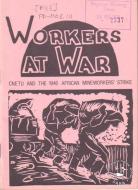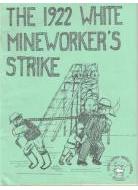Unlike other countries in the world, where the working class was generally a single grouping in society, the working class in South Africa was divided on racial lines. The black working class endured severe exploitation while the white workers were protected and privileged on the basis of the colour of their skin.
For example, in 1911 the government introduced the Mines and Works Act which ensured that skilled and semi-skilled work was reserved for white workers only. They were also paid more than black workers for doing the same work. This led to a conflict of interests between the government and the mine owners.
The Chamber of Mines who preferred to use black workers because they could pay them less, while the government protected white workers because they had the right to vote and could ensure that the government stayed in power.
White workers on the mines had gone on strike a number of times, but it was only during the First World War that the Chamber of Mines decided to recognise white trade unions. In 1918, the South African Mineworkers’ Union negotiated an agreement with the Chamber of Mines called the Status Quo Agreement.
They agreed that for every 17 black workers employed on the mines, two white miners would be employed and be paid skilled wages. However, as the economy slowed down after the war, the Chamber of Mines looked for ways of cutting costs in the industry. They decided to lay off many white workers and lower the wages of those still working. This angered white workers!
The Rand Revolt of 1922 took place three years after the formation of the I.C.U, when white mine workers went on strike. These workers resisted retrenchment. The strike was against goldmine bosses and the state that supported them. Commandos (armed groups) formed to protect striking mine workers and their families. At the time, there were ten times more black miners than white miners, yet white miners refused to collaborate with black miners in the struggle for better working conditions. African unions were excluded from the Trade Union Council of South Africa (TUCSA) when it was formed in 1953.
- Labour History Group booklet.
-The 1922 White mineworkers Strike, date unknown.
The Prime Minister, Jan Smuts, sent in the army. The air force dropped bombs on striking workers and there were street battles in Johannesburg. After four days of struggle, 153 people were killed, 500 wounded and over 5,000 workers were arrested. Four of the leaders of the strike were hanged. The white mine workers had lost the strike! Thousands lost their jobs while those who remained were forced to accept a huge drop in wages.
This strike increased the divisions that already existed between black and white workers, especially as many white workers lost their jobs to black workers.
Exhibitions in the classroom
Reading the past:
SOURCE: Labour History Group booklet, The 1922 white mineworkers strike, date unknown.
Read the text accompanying in the panel above and answer the questions about the white working class.
• In what way was the working class in South Africa different to that of other countries?
• In which two ways in 1911 did the government ensure that white miners were treated better than black miners?
• Why did the Chamber of Mines prefer to employ black labour on the mines?
• What were the results of the January 1922 strike for both black and white miners?
NEXT: The demand for trade unions in the 1930 and 1940s








